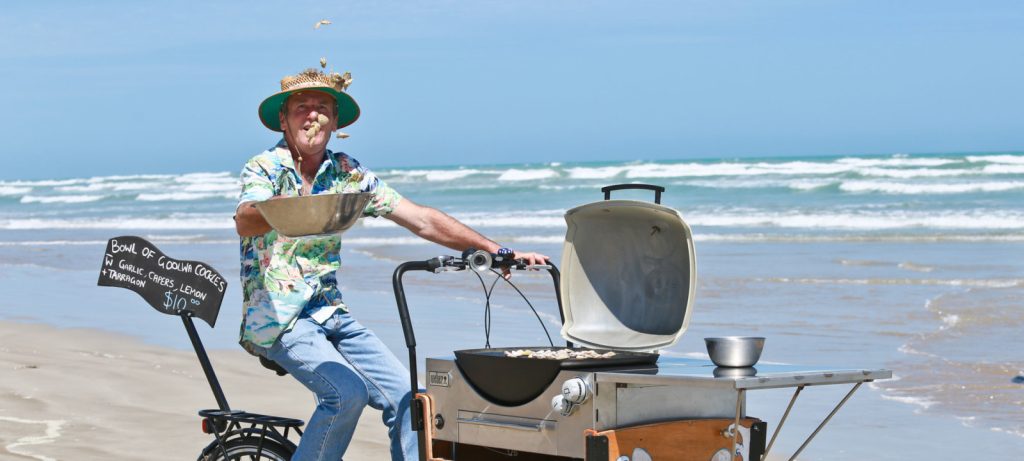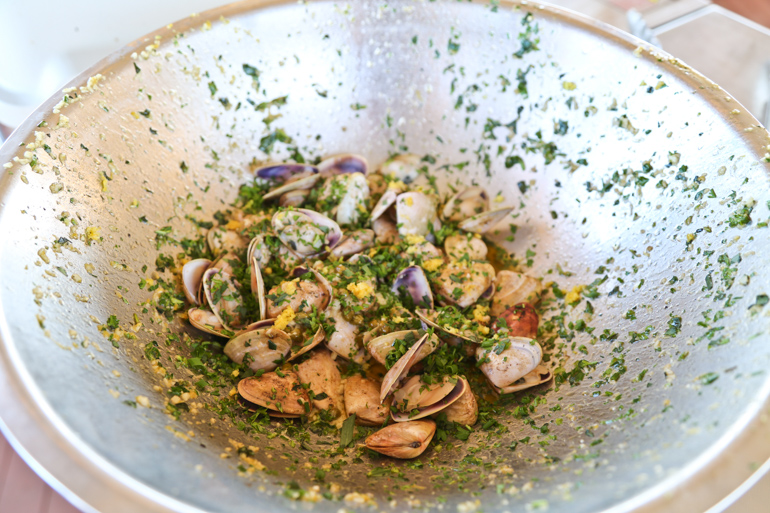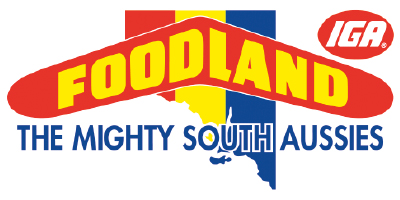Thirty years ago it was unusual to spot the Goolwa pipi anywhere but on the end of a fishing hook.
Now the small surf clams – locally known as pipis or cockles – are dished up at some of the finest restaurants, and Australia’s largest pipi fishery Goolwa Pipi Co wouldn’t have it any other way.
The Port Elliot-based company’s managing director Tom Robinson says pipis are in high demand as South Australia continues to be recognised internationally for its world-class produce.
“In the early 2000s less than 1% of commercially farmed pipis were for sold human consumption, but now 80% of our pipis are sold for food,” he says.
“Like many things, you could once only get squid as bait. Now it’s a delicacy and it’s the same with pipis.
“It almost seems sacrificial to put them on a hook.”
Australia’s best restaurant Orana in Adelaide, as well as Iberia and Africola are some of the top establishments that are cooking with SA pipis.
Aside from experiencing demand from the local restaurant industry, Goolwa Pipi Co is preparing to enter export markets in Europe.
Its credentials include Marine Stewardship Certification while the SA Shellfish Quality Assurance Program reguarly tests the waters to ensure pipis are safe for eating.
The pipis are harvested from surf beaches on the south east side of the Murray Mouth, off a remote part of the Coorong National Park.
Fishers stand in shallow water while burrowing their feet into the sand, where the pipis are found, raked in and scooped into nets.
Goolwa Pipi Co fishes year-round, harvesting up to one tonne of pipis per day.
They’re taken to the company’s Port Elliot processing centre where they are immersed in tanks of salt water for a day and naturally rid themselves of sand.
The pipis are packed in Modified Atmosphere Packaging or are immediately blast-frozen.
Goolwa Pipi Co was launched in 2014 by a collaboration between a small number of families, including third-generation fishing family the Hoads.
Tom says the business collaboration between families is the key to the company’s success as it allows them to share risks and costs.
For Tom himself, a former advertising executive, the seafood industry was relatively unfamiliar territory until 15 years ago when he decided it was time for a literal sea change.
“I was working a desk job in Adelaide and I left to become a fisherman,” he says.
Tom confesses that he’s better at the paperwork side of the business, preferring to leave the harvesting to the trained team of professionals.
“I don’t do it because I’m not tough enough,” he laughs.
“But our teams fish in temperatures of around 10C and they’re in the water in shorts and bare feet in the middle of winter.”
He points out the difference between cockles and pipis.
“The mud cockles that are harvested off Coffin Bay near Port Lincoln are the true cockles,” he says.
“These cockles have a ridged shell, whereas pipis have a smooth shell.”
Tom says the business is collecting more pipis than ever since a quota system was introduced in 2008 to stop the species from being overfished.
“SA fisheries are some of the best in the world and it’s great for us to be able to harvest in a sustainable fishing environment,” he says.
“Our stock levels are healthy and we’re confident we’re fishing in a sustainable way.”
Restrictions apply for recreational pipi fishers. For information on limits and closed areas see here.
Header image is Fleurieu food identity Olaf Hansen.
Like this story? Nominate a story from your region.
Click here to nominate >>
These inspiring regional stories made possible by:















